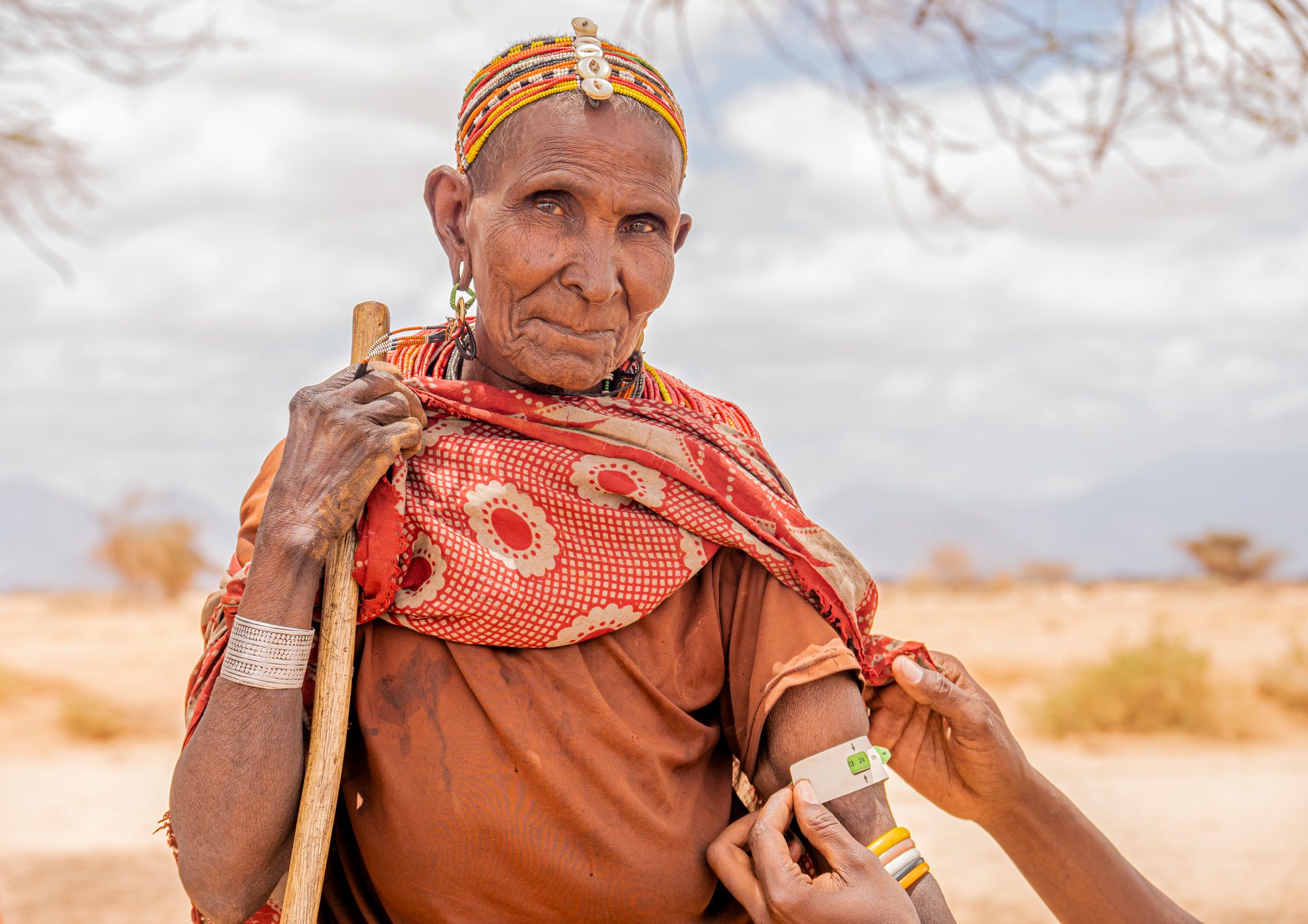DESIGN FOR TABLET
COMING SOON
This month Viz for Social Good (VFSG) partnered with the World Health Organisation (WHO) to visualise what disability looks like across the globe. Using data provided by the Institute for Health Metrics and Evaluation (IHME) a series of digitally accessible visuals have been produced which aim to paint a picture of what disability prevalence looks like in the modern world.
Almost everyone will experience disablity at some point in their lives - for many, this is what it means to be human.
This month Viz for Social Good (VFSG) partnered with the World Health Organisation (WHO) to visualise what disability looks like across the globe. Using data provided by the Institute for Health Metrics and Evaluation (IHME) a series of digitally accessible visuals have been produced which aim to paint a picture of what disability prevalence looks like in the modern world.


Info not dependent on colour
In addition to colour, visualisations include a secondary indicator when displaying information. These alternative methods include detailed labels, supplementary icons, size, shape and pattern.




Alternative text
Images have been tagged with meaningful descriptions that provide contextual alternative text. This approach was taken to ensure those using screen readers understand the semantic meaning of the image.




Multi-device compatibility
This project has been designed to enable viewing across multiple different devices. Implementing responsive development principles, content is scaled appropriately depending on the device.







Yes, that's a lot of
16% of the population in fact.
Just think, that's 1 in 6 of us.

















SCROLL DOWN

SCROLL DOWN

SCROLL DOWN

SCROLL DOWN

SCROLL DOWN
...

SCROLL DOWN
You may not be aware of everyone's lived experience.
But you can choose to be empathetic in your actions.
It's estimated that 80% of disabilities are invisible.
Source: Hidden disabilities sunflower
Let's help shake the stigma, and bring visibility to all disabilities.
Insights
Musculoskeletal disorders
Women have a particular predisposition to disabilities caused by lower back pain, with 64% of all estimated cases being attributed to this population. They also proved to be the dominant sex when it came to all other disabilities arising from musculoskeletal disorders, apart from gout, where we observed that men were 3 times more likely to live with a disability as a result of this condition.
Neurological disorders
Migraines are approximately 1.6 times more likely to result in a disability amongst women. In addition to this, tension-type headaches were also skewed in their favour. Several other neurological disorders were found to adversely impact women, however, the data did show that men had a slight predisposition toward disabilities caused by Parkinson’s (55%) and idiopathic epilepsy (52%).
Other Non-communicable diseases
Drilling down into the IHME’s grouping of other non-communicable diseases, it becomes clear why there is a 77% skew toward the female population. Included within this aggregation are health conditions which solely impact women e.g. uterine fibroids and endometriosis.
It is also estimated that approximately 27 million women are living with a disability caused as a result of some form of gynecological disease - put into perspective, that is equivalent to 7% of the global female population [1].
Substance use disorders
Across all disability causes, from cocaine to alcohol use, men were significantly more likely [2] to be living with a disability as a result of substance use disorders. This was observed most dramatically for alcohol use, where the data showed that men were 3.5 times more likely to be living with a disability as a result of this form of substance abuse, than women.
[2] Opioid use disorder is the only exception where prevalence is roughly on par between both sexes.
Final thoughts
It is clear that there is an added gender dimension that needs to be considered when it comes to disability. On paper, women are more likely to experience disability than their male counterparts, and are less likely to have their disability categorised as severe.
Could this be due to women’s pain being under estimated by health-care professionals as many studies have found [3] or is this purely due to their biological make-up?
Do we also need to consider the possibility that men may have a natural predisposition to certain disability cause groups that are categorised as severe, perhaps due to the nature of their transmission in the case of syphilis?
Ultimately, the data provided by IHME can only tell us part of the story. However, the one thing we can be certain of is that regardless of the sex you are assigned at birth, health equity is a human right and one we must continue to rally behind.
[3] Source: UCL News | Analysis
Final thoughts
It is clear that there is an added gender dimension that needs to be considered when it comes to disability. On paper, women are more likely to experience disability than their male counterparts, and are less likely to have their disability categorised as severe.
Could this be due to women’s pain being under estimated by health-care professionals as many studies have found [3] or is this purely due to their biological make-up?
Do we also need to consider the possibility that men may have a natural predisposition to certain disability cause groups that are categorised as severe, perhaps due to the nature of their transmission in the case of syphilis?
Ultimately, the data provided by IHME can only tell us part of the story. However, the one thing we can be certain of is that regardless of the sex you are assigned at birth, health equity is a human right and one we must continue to rally behind.
[3] Source: UCL News | Analysis
Data Sources:
World Health Organisation, Institute for Health Metrics and Evaluation, Hidden Disabilities Sunflower and United Nations
Illustration and data visualisation by Ellen O’Neill
(See more at https://www.behance.net/ellensianoneill)



